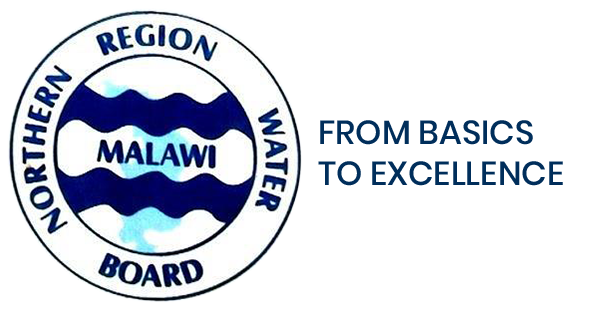St Joseph Primary School is one of the big primary schools for boys in Nkhata Bay with an enrollment of over 800 pupils.
With the rising enrollment, sanitation challenges started to emerge as the school did not have enough sanitation facilities such as toilets to properly cater for the pupils.
According to the head teacher of the school Isaac Msukwa, a few years ago, the school was left with two old almost full toilets after others had fallen down. Even for the two, the district health office issued a warning against their continued use.
Approximately 830 learners were using two pit latrines, translating to a ratio of 1 toilet to 415 learners. This is against UNICEF’s recommendation of a minimum of one toilet for every 50 male learners and one toilet for every 25 girls.
“It was not a good situation as learners would opt to relieve themselves in the bush,” Msukwa.
This act was not only dehumanizing but also threatened the health and welfare of the pupils.
Today, such is no longer the case with the situation steadily improving following interventions by the Northern Region Water Board through the Nkhata Bay Town Water Supply and Sanitation project. The project provided sanitation facilities comprising four toilets and a urinal including a special needs toilet to cater for pupils with special needs – complete with handwashing facilities to encourage hygiene.
Despite not meeting the UNICEF recommendations on pupil – toilet ratio, the facilities have greatly improved the situation from the previous ratio of 1 toilet serving 415 pupils to 1 toilet serving 136 pupils.
“Our target is to meet the standards but still with the intervention by the NRWB, there is a great improvement in terms of sanitation, hygiene and health here at the school. We are happy but as you can see we still need more toilets for both pupils and teachers to be within the acceptable standards,” explains Msukwa who adds that to keep the sanitation facilities clean, the school management committee pays for the cleaning and maintenance of the facilities.
A visit to the sanitation facilities revealed that the toilets are well maintained and taken care of months after their handover.
“The facilities are washed every day and learners have been trained on how to properly use the facilities and as well as the need to wash their hands after using the toilets or urinal ,” Msukwa says
Msukwa added that the training has not only helped pupils but has also ignited behavioral change in the communities the pupils are coming from. The head teacher disclosed that the school is getting reports from parents that children are now urging their parents to always wash hands before eating anything and also encouraging them to have and maintain proper toilets
St Joseph was one of the 23 primary and secondary schools triggered in the district using the school led total sanitation (SLTS) approach.
“As a utility, this is good news that the interventions are having such an impact. As you know, Nkhata Bay has been a cholera hotspot but with water supply and sanitation interventions, we have reversed this trend especially in areas where we implemented the project,” quipped Eng. Catherine MBEWE Mwafulirwa, Director of Infrastructure Development at Northern Region Water Board.
Across the road, the girls primary school St Maria Gorreti is another beneficiary.
Just as St Joseph, St Maria Gorrette with 775 girl learners has also started reaping benefits of the sanitation interventions. Margaret Misomali, headteacher of the school, says compared to the past, learners have more room in the washrooms to attend to their menstrual hygiene at school and still attend classes.
“You should know that pupils especially girls get easily frustrated to experience hygiene situations in school that are worse than those in their homes. As a result they easily withdraw from school,” explains Misomali
To demonstrate the impact that the sanitation facilities have had so far, Misomali cites monthly average class attendance records which indicate a steady improvement .
“Before the construction of the new facilities, the daily class attendance averaged between 80 to 90 percent for Standard One class. Now, almost all 106 learners attend classes daily except when one gets sick. Similarly, the Standard Eight class attendance is around 100 percent today from an average of 85 to 90 percent,” she discloses.
Similar WASH facilities have been constructed at other schools in the district namely Sanga Community Day Secondary, Sanga, Mpamba, Mkondezi Demonstration, Msani and Limphasa Primaries.
The sanitation and hygiene interventions under the project were also extended to markets and health centers in the district namely Mpamba Health Centre, Mpamba Trading Centre, Sanga and Chintheche Turn Off markets.
The facility at Chintheche Turn Off market has been subcontracted to a private operator, Royal Flush, to run it as a business. People pay to access the toilet, urinal and shower facilities. For every payment, a receipt is issued to promote transparency and ensure sustainability.
According to Royal Flush owner, Mavuto Kaunda, the facility charges MK200.00 for urination, MK300.00 for defecation, and MK500.00 for a shower; and makes between MK3,000 – MK5,000 per day – an amount he says would rise when more people start patronising the facilities.
The project financed by the African Development Bank, the OPEC Fund and Malawi Government in total constructed 23 disability friendly sanitation facilities in public schools and places. Further, the project facilitated formation and training of 23 sanitation clubs to enhance sanitation and hygiene in the schools.
